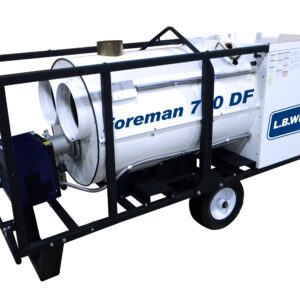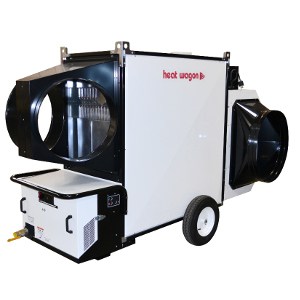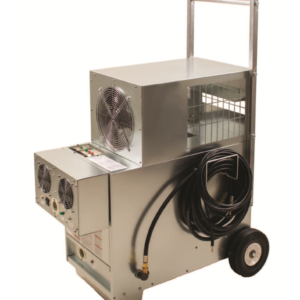Restoration businesses fill a needed gap in the life of everyday Americans. Even if someone can afford and make time for preventative maintenance on their home, and even if their house was built according to the most exacting specifications, disasters still happen–that’s why we call them disasters!
When you run a fairly-priced, comprehensive disaster restoration business, you are the hero to the people who thought they were ready for everything. You will be the on-call community member who brings health and safety back to people’s homes in their time of need.
But, like with any business, there are essential steps you will want to take to ensure you are ready to operate. By reading this article, and supplementing any further questions with answers from the experts at Thermal Flow Tech, we’re confident you can get your business off the ground in no time.
What do I need to do before anything else?
First, it’s important to know that while there state or federal requirements for operating a disaster restoration business, may vary from state to state. In addition to doing your due diligence based on your unique area, you may find resources that help to boost your abilities and your credibility. For example, there is certification available from the Institute of Inspection, Cleaning, and Restoration Certification (or IICRC). They offer a comprehensive range of classes on every portion of disaster restoration, as well as updated guidelines and industry standards to keep you and your customers safe.
It’s good practice to be certified, and makes you more marketable–given the choice between an uncertified and certified professional, customers will usually choose the latter. Moreover, a significant portion of your business as a disaster restoration professional will come through insurance institutions, and these companies often turn their cases over to certified businesses and individuals. By their line of thinking, a certified professional is more likely to do the job properly the first time, which means less costs for their payout.
You will also need bonding coverage, a business license, liability insurance, and restoration equipment (which you can always find at Thermal Flow Tech! In addition, many areas may require an environmental and pollution liability policy. Doing your homework is the best first step to starting your disaster restoration business!
What should I know about the job?
Operating a disaster restoration business means you are in charge of how you do business. When you show up to a job, everyone there depends on you knowing exactly how to return their property to its previous state (or as close as possible). This also means that you decide how best to go about handling every problem you come across. However, like a superhero, you are on call–disasters don’t happen on a schedule, and you may get calls for jobs at any hour of the day.
Like any entrepreneurship, ultimately, your boss is your wallet, and you’ll have the final call for what jobs you can and will take. Operators who excel at disaster restoration often sport excellent time management skills, exude compassion for their customers, and keep calm under pressure.
One of the most common questions that arise about disaster restoration includes the issue of billing. In this line of work, you often are working for people trying to manage and rebuild after catastrophic damage. This means that they rely on insurance companies to help counter some of the costs. Working with insurance companies becomes a large part of understanding the finances of your disaster restoration business.
Whether you are coordinating payments with the customer or the insurance companies, there are a lot of complexities to billing. We often recommend learning Xactimate, which is basically the line item billing standard for disaster restoration. Regardless of the tools that you use, organization and patience are often a big part of the job.
What if I can offer other services?
Great! Many homeowners and businesses capitalize on the unfortunate destruction or damage to their property by using it as a reason to finally renovate. As such, there are many related trades and services that coagulate perfectly with disaster restoration, such as carpet and rug cleaning, furniture cleaning, HVAC maintenance, painting, and any kind of general reconstruction and remodeling (replacing or repairing destroyed/broken walls, flooring, cabinets, etc.).
It is still completely possible and even ideal to operate a disaster restoration business without offering any sort of repair or reconstruction services. However, the two practices are symbiotic, and savvy operators who are exclusive to disaster restoration will often work in tandem with local allies in the construction business to keep competition low.
What kind of equipment should I use?
Disaster restoration focuses primarily on mitigating or eliminating damage caused by water. This means air flow and heating are king, and your customers will want more than a simple box fan and a box of matches when you show up to save the day.
What makes disaster restoration unique as a business is that, comparatively, the start-up costs are quite low. Yes, you can go all out and purchase the most comprehensive, expensive product list imaginable, but nearly all jobs require a limited list of tools, which means you can easily make a complete inventory of your start-up costs. With one shopping cart at Thermal Flow Tech, you can purchase all the equipment you will need for years. That’s efficiency!
At the least, you will want the following:
- Air Mover – heavy duty fans that work in tandem with your other tools for rapid drying.
- Moisture meter – these verify that you’re doing the work you set out to do.
- Industrial heater – for drying out and evaporating water in large spaces.
- Air filtration – AKA “scrubbers,” for keeping the air safe (and removing odor!) for both you and your client from harmful particles in the drying and cleaning process.
- Dehumidifier – for keeping all that moisture you just removed from sliding right back into the woodwork
Because the scale of work you’ll be facing often determines the amount of machine you need, talking with an expert–like those at Thermal Flow Tech–is crucial. There, you can learn from old hands in the business to find out what kind of equipment best suits the needs for your region of service.
Need more help?
That’s fantastic. Thermal Flow Tech has a whole retinue of friendly, compassionate experts ready to answer all your questions and provide the guidance you need. When your business flourishes, we succeed, and we will do all that we can to give you the best start possible. Contact Thermal Flow Tech’s restoration experts today!




